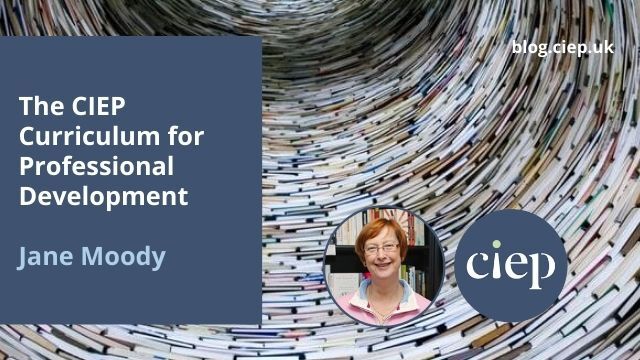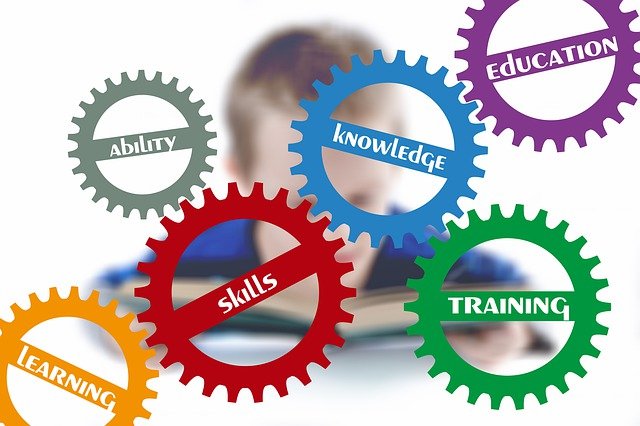The CIEP’s training director, Jane Moody, has been working closely with directors, tutors and the wider membership to create a curriculum for professional development. In this post, Jane explains:
- why we need a curriculum
- what that curriculum covers
- how the curriculum works.
 Do we need a curriculum?
Do we need a curriculum?
Yes, we do! Most professional organisations have a set of skills and knowledge that you need to understand or at least know something about to call yourself a professional in their area. Some test their members on this set of skills (physiotherapists and accountants, for example) before they can call themselves members of their professional body. All expect their members to refresh their skills and learning against this skill set periodically. Continuing professional development, CPD, is expected of all members, no matter their status in the organisation, and this is true of copyeditors and proofreaders as well.
We, as editors and proofreaders, now also have a framework of study – the CIEP Curriculum for Professional Development.
What does it cover?
At first glance, you might think that you won’t need to know about everything in the curriculum. Have a closer look, though. Any publishing professional needs a basic grounding in publishing ethics and law – even if you only scratch the surface, you should at least know something about the moral rights of authors, plagiarism and copyright. If you work as a freelance editor/proofreader, you are running your own business, so you need to know something about keeping records, what HMRC needs to know about you, and how to work efficiently. You will have your own equipment, so a basic knowledge of how to manage your files and keep them secure is essential for your own and your clients’ peace of mind. That takes you to the end of Domain 1 of the curriculum: Working as a professional.
You may be working in-house in a company and, if so, there will be some aspects of business management and practice that may not be immediately relevant to you. The knowledge in this area will, however, be useful to most members working in our profession today.
Even if you never work for a ‘traditional’ publisher with an editorial department, a production department and a marketing department, you will need to understand the basics of a publishing workflow. There are good reasons why some tasks are done before or after others. The more you understand about the industry and its processes, the wider your client base can be and the more useful you can be to your clients.
Working with words means that you need a good knowledge of the English language and its mechanics, and how different people, groups and organisations use the language. You need to be able to judge whether something makes sense, is clear and appropriate for the audience, and to be able to raise queries with an author or client in a concise and sensitive manner.
How you work is critical to getting repeat business – do a good job and you may pick up a regular client; do what you think you need to without learning about how and why and you are not likely to be asked for a second date. The nuts and bolts of copyediting and proofreading processes have been refined over many decades and, no matter who you work for, understanding what you are doing, who for and why matters if you want to do the best job you can. And now you are at the end of Domain 2.
Not all editors/proofreaders will use all the skills and knowledge included in these two domains of the curriculum in their day-to-day work. Nevertheless, as you grow in skills and experience, you are likely to want to broaden your awareness of publishing processes and the breadth of publishing outside your initial comfort zone. Developing your knowledge and acquiring a broad range of skills are essential CPD.
Some people prefer to remain as ‘generalists’, working for many different clients in several genres and subject areas. If this is true for you, you may never need to consult Domain 3. Others like to specialise, some in traditional areas where there is a body of specialist publishing, such as medicine, music, fiction or the law. Each of these specialist areas has its own conventions, specialist knowledge and terminology. Domain 3 covers a few of these specialisms and others will be added – if there is a specialism that you think should be included, copy the template at the start of Domain 3 (page 28), fill it in and send it to the training director.
 How it works
How it works
Each domain of the curriculum is set out in columns. The first column divides the domain into detailed topics. The second column shows the competencies, professional skills and attitudes expected of a professional copyeditor/proofreader for this topic, and the third lists some resources to support learning in this area. Eventually, there will be a fourth column, which will list the ways in which a copyeditor/proofreader can demonstrate their competency in this area – a test pass or other kind of assessment, perhaps. This is an aspiration for the future.
We hope that you will contribute to keeping the curriculum alive. Have you taken a course that helped to expand your knowledge and skills? Have you come across a book or other resource that is really useful to you in your practice? Do tell the training director about it.
About Jane Moody
 Jane has worked with books for all her working life (which is rather more years than she cares to admit), having started life as a librarian. She started a freelance editing business while at home with her two children, which she maintained for 15 years before going back into full-time employment as head of publishing for a medical Royal College.
Jane has worked with books for all her working life (which is rather more years than she cares to admit), having started life as a librarian. She started a freelance editing business while at home with her two children, which she maintained for 15 years before going back into full-time employment as head of publishing for a medical Royal College.
Now retired, she has resurrected her editorial business, but has less time for work these days as she spends much time with her four grandchildren and in her garden.
 About the CIEP
About the CIEP
The Chartered Institute of Editing and Proofreading (CIEP) is a non-profit body promoting excellence in English language editing. We set and demonstrate editorial standards, and we are a community, training hub and support network for editorial professionals – the people who work to make text accurate, clear and fit for purpose.
Find out more about:
Photo credits: book stacks by by Lysander Yuen on Unsplash; cogs by Gerd Altmann on Pixabay.
Posted by Abi Saffrey, CIEP blog coordinator.

I welcome the introduction of the CIEP curriculum, thank you to all involved. It is a fantastic resource to refer to and I look forward to working through it to see which areas I need to strengthen.
I would suggest that a specialism to add to Section 3 is website editing/proofreading. There are elements to this work that are very specific (e.g. considering SEO, writing-for-the-web techniques, accessibility and more). When I get a moment, I will submit a template as requested in the blog article above.
Many thanks again, and I look forward to seeing how the curriculum develops.
Thank you Debbie. I look forward to receiving your thoughts on this topic.